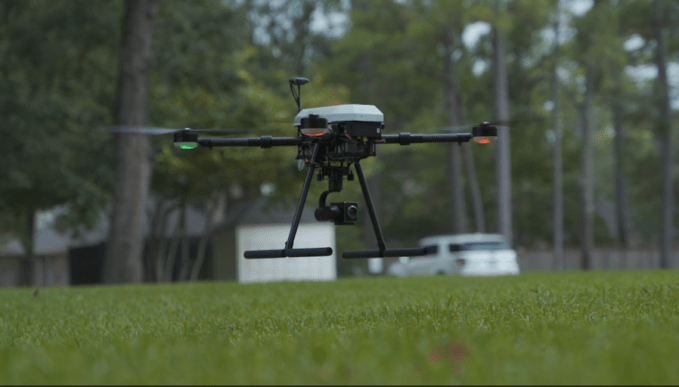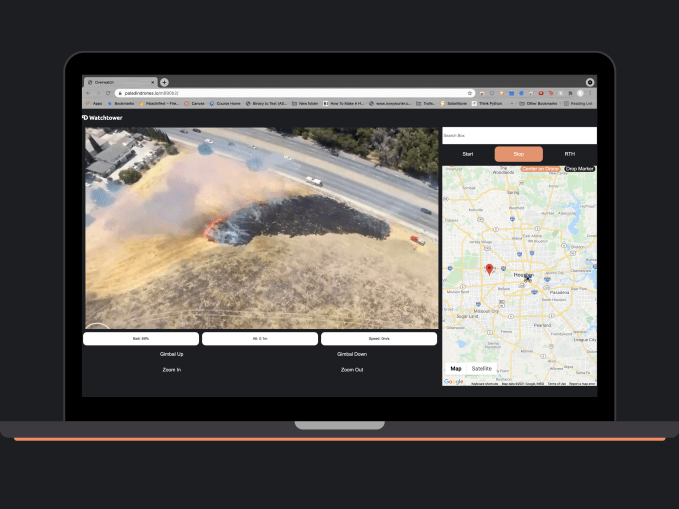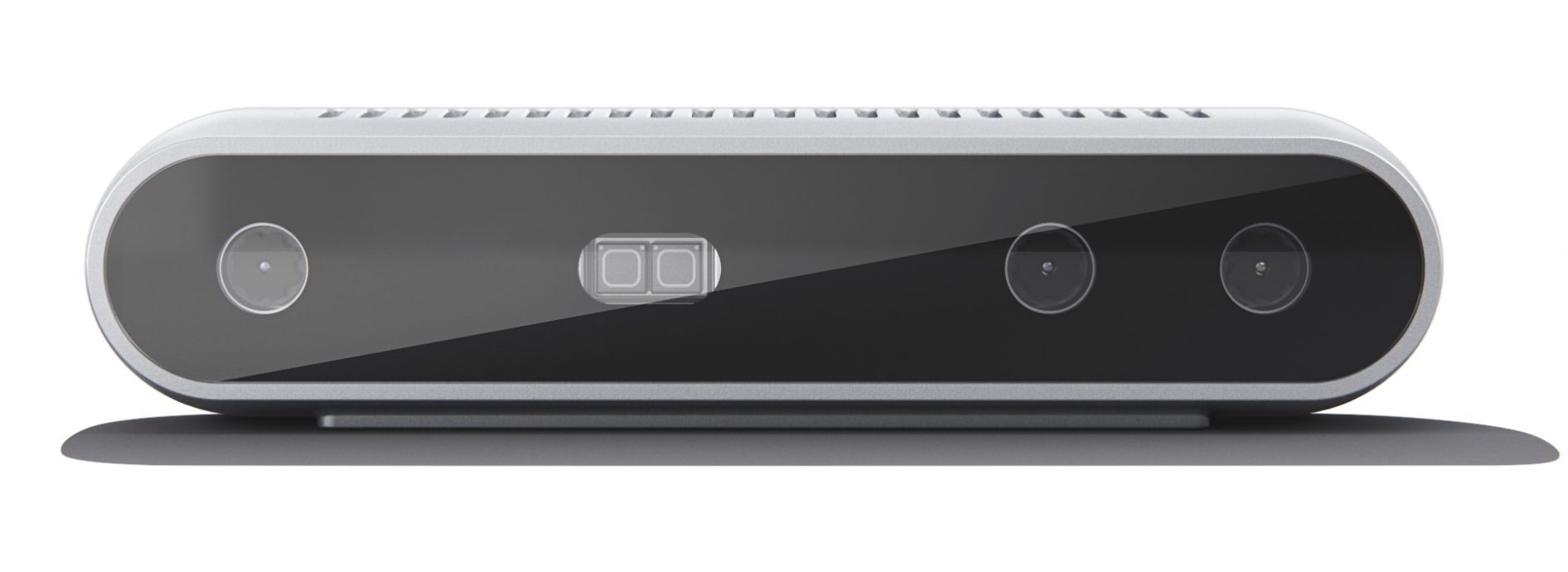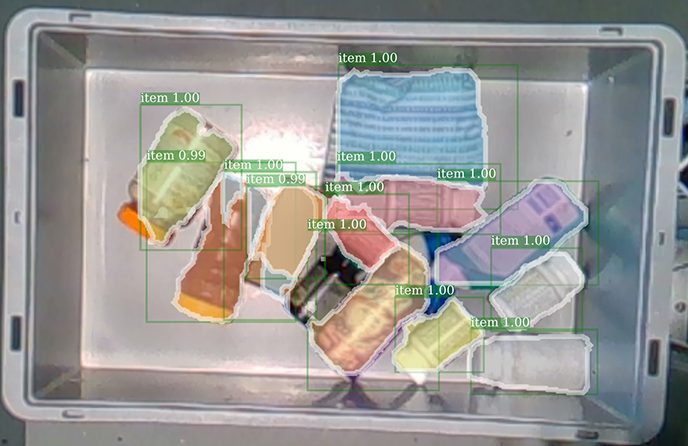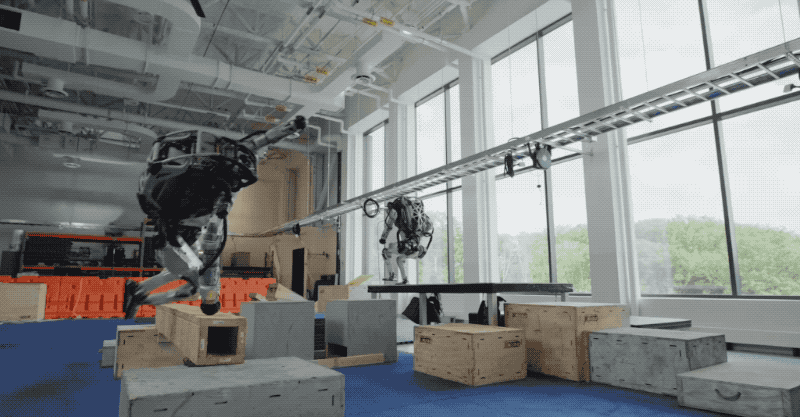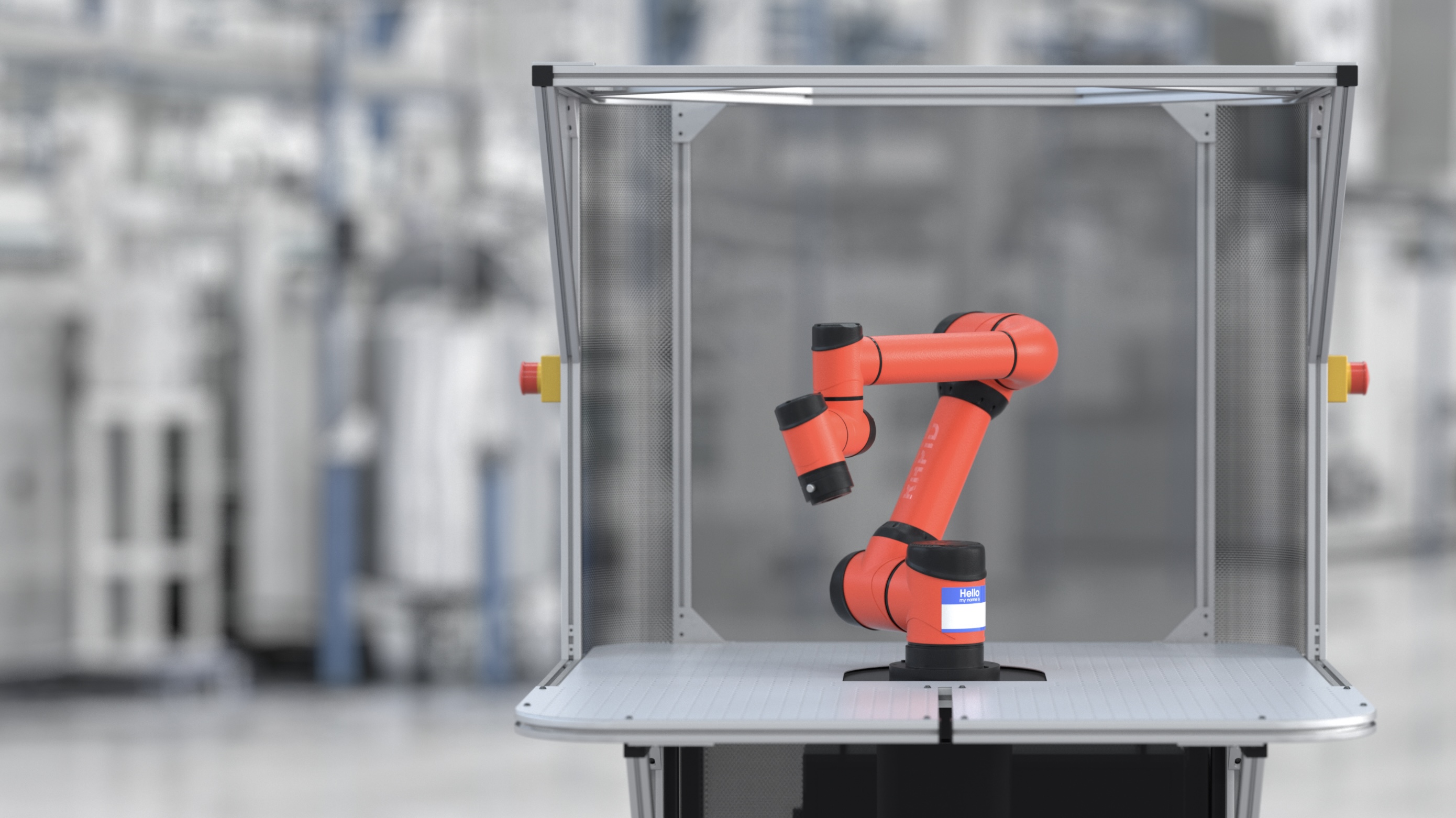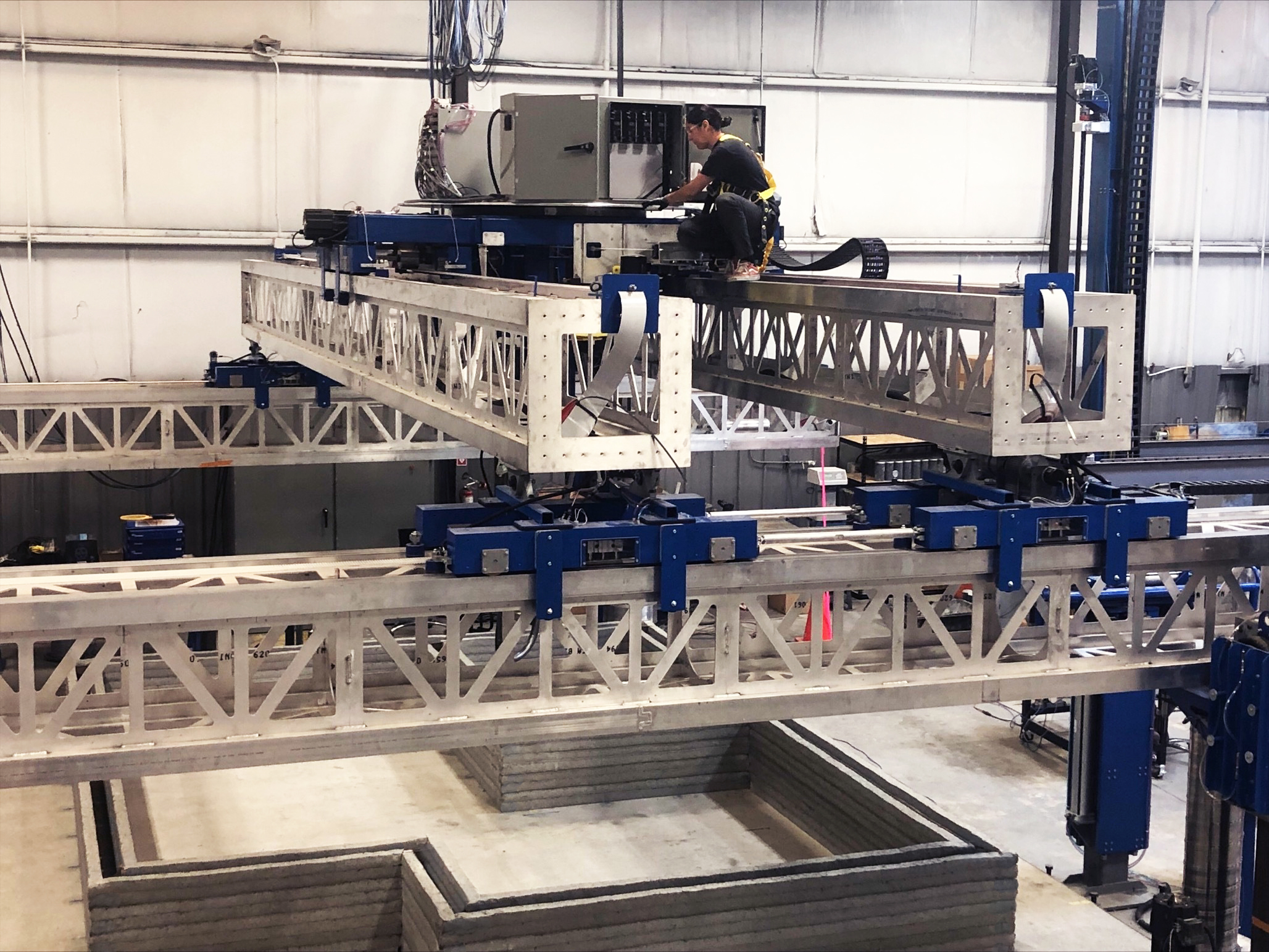- August 19, 2021
- by:
- in: Blog
Reels are coming to Facebook in the U.S. The company this morning announced it will begin testing a new feature, Facebook Reels, which will give Facebook users the ability to create and share short-form video content directly within the News Feed or within Facebook Groups. The addition is an expansion of tests launched earlier this
Reels are coming to Facebook in the U.S. The company this morning announced it will begin testing a new feature, Facebook Reels, which will give Facebook users the ability to create and share short-form video content directly within the News Feed or within Facebook Groups. The addition is an expansion of tests launched earlier this year in India, Mexico and Canada, which had focused on bringing short-form videos to Facebook users, including by sharing existing Instagram Reels to Facebook, as had been reported.
In addition, Facebook today says it will also test a new feature that will give Instagram creators in the U.S. the option to have their Instagram Reels shown as recommended content on Facebook. If the creators opt in, their videos will appear in the “Reels” section in users’ News Feed, alongside other Reels created on Facebook.
There will be many places where users can create Reels from Facebook, as the new feature launches.
Initially, you’ll be able to tap a “Create” button from the Reels section that appears as you scroll the News Feed, while you’re watching Reels or by tapping on “Reels” at the top of your News Feed. From here, users will gain access to a standard set of creation tools, including those for video capture, music selection, camera roll import, timed text and more — much like you would have access to on Instagram.
For audio, you can either choose a song from Facebook’s music library, record your own original audio or even use someone else’s audio, if their Reels are set to “public.” There are also a variety of effects and editing tools to choose from, including a timer for recording Reels hands-free, tools to speed up or slow down a part of the video or your original audio and a number of augmented reality effects created either by Facebook or third-party developers.
Facebook told us that, for the time being, “most” of Instagram Reels’ features will also be available on Facebook Reels. But other features — like Remix (its take on TikTok’s side-by-side videos called Duets) — will be added over time as the test scales to more people. The user interface for Reels may also evolve over time to look somewhat different from Reels on Instagram, depending on user feedback.
After a Reel has been created, you can choose who to share it with — such as “Friends,” a specific audience like “Friends except…”, or the general public. The latter is the default setting.
The feature will be made available within Facebook Groups, where Reels can be created then shared with members of the community who have similar interests.
Users can also choose to tap into “My Reels” to view past creations. And you can browse Reels created by others in the News Feed, and in select Groups and Pages — where you can like, comment on or share them, just as you could with any other type of post. Reels will now be surfaced in Search results, too, Facebook told us.
Like much of what appears on Facebook, Reels will be recommended to users based on what people are interested in, what they engage with and what’s broadly popular. This will apply to both the shared Instagram Reels and the Facebook Reels.

Image Credits: Facebook (Reels in Groups)
The company explained the decision to replicate the Reels product inside Facebook is a result of consumers’ growing interest in video, and particularly short-form video. Today, video accounts for almost half of all time spent on Facebook, in fact. On Facebook’s latest earnings call, CEO Mark Zuckerberg remarked that Reels was “already the largest contributor to engagement growth on Instagram,” given the popularity of short-form video.
“We’re very focused on making it easy for anyone to create video, and then for those videos to be viewed across all of our different services, starting with Facebook and Instagram first,” he had told investors.
But Facebook also understands that people have different communities and audiences on Instagram and Facebook, so simply offering a cross-posting option may not have sufficed.
However, for existing Reels creators who do want to tap into Facebook’s large audience, a new option will allow them to opt-in to have their Reels shared to Facebook. This could be useful for those producing more general-interest Reels content.
These shared Reels will display the creator’s Instagram username, as well, which could help them build a following. Creators’ Reels can also be remixed, with the creator’s permission, and their original audio can be re-used in other people’s Reels — again, much like on TikTok.
This feature will also be introduced as a “test,” Facebook said.
While Instagram is already beginning to monetize Reels through ads, Facebook told us that Reels on Facebook don’t currently include ads. But, “we plan to roll out ads in the future,” a Facebook spokesperson added.
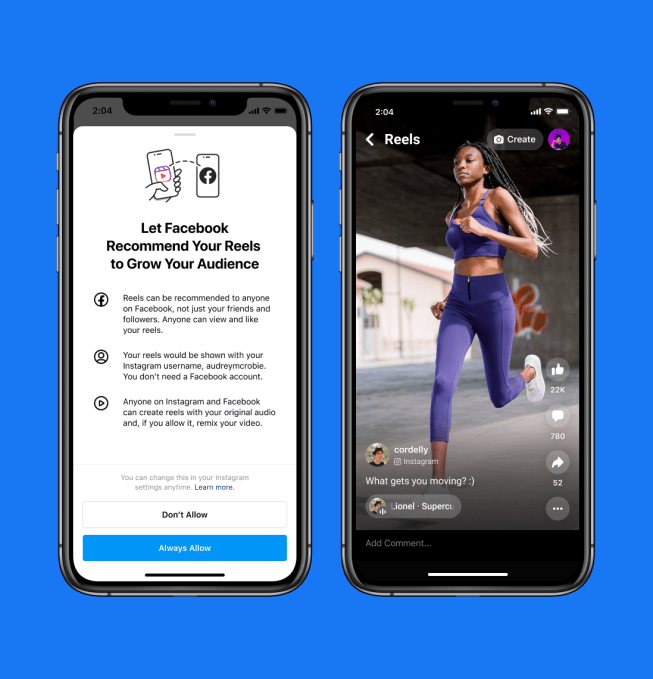
Image Credits: Facebook (sharing Instagram Reels to Facebook opt-in flow)
Reels, which is Facebook’s answer to the growing threat of TikTok, first launched to global audiences a year ago. This launch alone was not enough to win Instagram the top spot as the world’s most downloaded mobile app. In 2020, that win went to TikTok, after years where Facebook-owned apps dominated the top charts. And TikTok today continues to sit at the top of App Store charts in terms of both app installs and consumer spending, according to multiple third-party reports.
For Facebook, TikTok represents an existential threat to its business. If users’ time and attention are being spent elsewhere, Facebook’s advertisers could then follow, impacting Facebook’s bottom line. So instead of competing with TikTok in just one app, Facebook is now using two. And it’s leveraging its apps’ interoperability to ensure the best content can easily flow to both places.
The company is also directly investing in the creator community in hopes of tipping the scales back in its direction.
In July, the company announced a plan to invest more than $1 billion in creators across both Facebook and Instagram through 2022. This fund will reward more than just Reels’ creators, to be clear, as it will also pay out bonuses for videos with in-stream ads enabled or for enabling IGTV ads, among other things. It will also bonus top creators who have invited fans to send them tips in the form of a virtual currency, “stars.” But Instagram Reels, and now Facebook Reels, will be looped into that initiative.
Today, Facebook said it will announce additional bonus programs and seed funding in the months ahead that will pay out bonuses for Reels on Facebook. These will be funded from that $1 billion commitment. The company declined to share details on this front, but this news alone indicates Facebook Reels is far more than just “a test” in Facebook’s eyes.
The new Facebook Reels features will begin to roll out starting today, August 19, in the U.S. It will first be available to a “small percentage” of U.S. users on iOS and Android.
The feature will continue to operate in India, Mexico and Canada, as well.





